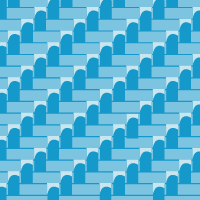Topic Editors

Multifunctional Porous Materials: Preparation, Structure, Modeling and Applications
Topic Information
Dear Colleagues,
Porous materials and functional porous composites demonstrate ubiquitous applications in the fields of thermal insulation, cushioning, soundproofing, wave absorption, separation, EMI shielding and many other industrial sectors that benefit from lightweightness and some other properties. The performance of porous products is primarily determined by the matrix type, fillers, porosity, pore size and the micro/nanostructure that formed during preparation. The methods for preparing porous materials include free foaming, constrained foaming, supercritical fluid foaming, foam injection molding, batch foaming, extrusion foaming, 3D printing as well as freeze-drying, etc. This Special Issue provides a forum for the discussion of the preparation, performance and modeling of multifunctional porous materials, with a focus on state-of-the-art progress, developments, and new trends. Perspectives, review articles, full papers, short communications, and technical papers on this topic are welcome.
Prof. Dr. Huawei Zou
Dr. Shengtai Zhou
Topic Editors
Keywords
- foaming technology
- porous materials
- thermal insulation
- sound absorption
- cushioning
- thermal properties
- EMI shielding performance
- separation
- wave absorption
- structure-performance relationship
Participating Journals
| Journal Name | Impact Factor | CiteScore | Launched Year | First Decision (median) | APC | |
|---|---|---|---|---|---|---|

Applied Sciences
|
2.5 | 5.5 | 2011 | 19.8 Days | CHF 2400 | Submit |

Journal of Composites Science
|
3.7 | 5.8 | 2017 | 16.2 Days | CHF 1800 | Submit |

Materials
|
3.2 | 6.4 | 2008 | 15.2 Days | CHF 2600 | Submit |

Nanomaterials
|
4.3 | 9.2 | 2010 | 15.4 Days | CHF 2400 | Submit |

Polymers
|
4.9 | 9.7 | 2009 | 14 Days | CHF 2700 | Submit |

Preprints.org is a multidisciplinary platform offering a preprint service designed to facilitate the early sharing of your research. It supports and empowers your research journey from the very beginning.
MDPI Topics is collaborating with Preprints.org and has established a direct connection between MDPI journals and the platform. Authors are encouraged to take advantage of this opportunity by posting their preprints at Preprints.org prior to publication:
- Share your research immediately: disseminate your ideas prior to publication and establish priority for your work.
- Safeguard your intellectual contribution: Protect your ideas with a time-stamped preprint that serves as proof of your research timeline.
- Boost visibility and impact: Increase the reach and influence of your research by making it accessible to a global audience.
- Gain early feedback: Receive valuable input and insights from peers before submitting to a journal.
- Ensure broad indexing: Web of Science (Preprint Citation Index), Google Scholar, Crossref, SHARE, PrePubMed, Scilit and Europe PMC.


